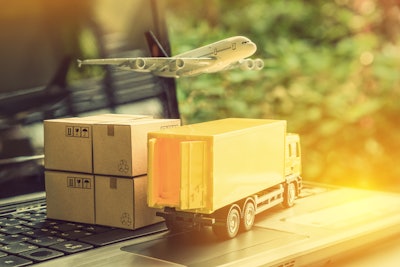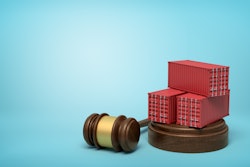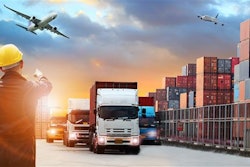
Now more than ever across all aspects of business and life, sustainable operations are imperative due to the tangible effects of climate change. It’s no longer a trend that may ebb and flow, but something that should be a top priority for every business every day now and in the future. Beyond the word’s environmental association, COVID-19 and other disruptions have proven that being “sustainable” also means being able to maintain your business operations as smoothly as possible through disruptions, by being prepared for these types of “black swan” events, which occur regularly throughout history.
According to the EPA, over 90% of any organization’s greenhouse gas emissions come from their supply chain. If the sustainability goal of the planet is to collectively lower humanity’s overall emissions, every organization needs to evaluate its supply chain and immediately start making it more sustainable. However, there are presently several challenges hindering any substantial, universal progress. The good news is that technology is emerging that can help any business address some of those challenges, such as where to begin and how to measure success.
The challenges
The initial challenge is one of the most confounding for businesses—where does one start? What specifically should it look to improve and measure? Is it carbon emissions, energy usage, waste disposal, or all of the above and in what order? A lack of a sufficient, adopted industry standard, like GAAP for accounting, can lead to confusion about which questions a company should ask itself, before it begins to even make an effort toward tangible improvement.
There is a challenging complexity to creating a sustainable supply chain. For example, take the raw materials industry, one of the most multilayered due to the extraction and processing of raw materials, moving them around the globe to manufacturing locations, the manufacturing processes, and then the final transportation to physical stores or end consumers. It requires massive amounts of these materials to make sustainable technology like wind farms, solar panels, electric cars, and batteries—all of which are created to help instill sustainability in our world. It’s not only a question of how can solar panels be created more sustainably, but also how can the materials needed to produce them be sourced more in a less environmentally harmful way?
Moving toward sustainability, especially when at the raw materials level, brings a classic challenge: cost. Changing processes, equipment and everything that goes into a product’s development is a financial burden. Who eats the cost of change, the manufacturer of the materials or the producer of the products? How much of it should be offset to the end consumer?
Lastly, and perhaps most important, is the challenge of measurement. A lowering of environmental impact based on business operations is not successfully measured because of the complete lack of standard principles to follow. Companies trying to improve things are then left in the dark on how to measure their efforts, preventing them from attacking the problem intelligently and discouraging other businesses at an earlier stage from moving in the same direction.
The tech tools that can help
Over the past few years, tools that measure the environmental impact of business operations and services have come on the scene or have been announced as in development. These tech tools hold some of the answers to the challenges above by giving companies a place to start, even if one solution has yet to fully encapsulate the needs of the industry.
Technology like Circulor measures the traceability of materials with a focus on ESG. It enables businesses to initiate and continually demonstrate responsible materials sourcing, reduce greenhouse gas emissions and improve overall supply chain visibility.
- Some tools can connect to tech platforms and help companies begin processes that are carbon offsetting. These solutions are provided by companies such as Cloverly, Patch.io, Sylvera.
- The environmental responsibility of transporting materials cannot be overstated. Companies like Waybridge are currently developing advanced tracking systems that will roll out as added product features.
- Tools like Arcadia can provide specific utility kilowatt usage data at the individual building level, rather than relying on manual and often time-consuming estimates. It’s less work to access better information.
Hope for the future
The push for change towards environmentally responsible operations is due to bring the world more than just a response to mitigate climate change. Reduction of greenhouse gas emissions and other negative environmental impacts like wastewater and water poisoning will result in healthier water sources and breathing air for all lifeforms on the planet.
From a consumer perspective, advanced manufacturing, production and transportation technologies will result in improved products and surely some altogether new ones. In the long run, products may even cost less for consumers as operations reach extreme efficiency and unnecessary actions and expenses are trimmed.
Many companies are beginning to announce their own goals to commit and make progress on sustainability such as the Essex Furukawa Vision 2030 Effort, Toyota 2050 Challenge or Burberry’s pledge to be climate positive by 2040. 25 companies came together earlier this year for a New York Times ad organized by Project Drawdown, where they all stated, “We have the solutions to the climate crisis. Federal policy and investment will help rapidly bring them to scale.” Some companies are beginning to adapt and participate with governments on regulation, and more are requesting reports from their suppliers such as the carbon used in producing materials. In some cases, these companies are demanding all materials provided to them are “green”, or even going as far as demanding that what they buy is carbon neutral.
If a manufacturer is working to be carbon neutral and buying carbon offsets, when it sources their materials, it should be calculating the financial costs associated all-in. It might be cheaper to buy your raw material from a mine very far away, but when buying carbon offsets is factored in, is it really any cheaper than buying that material from a mine located much physically closer?
If you are buying raw materials from multiple suppliers that have begun measuring and reporting overall carbon usage related to the materials based on factors like transportation mentioned previously, the manufacturer will choose to work with the suppliers who have the least amount of impact. This measurement and selection process will likely motivate suppliers to improve their carbon usage, not just to improve their environmental impact, but also in order to stay competitive.
According to the World Economic Forum, just 9% of companies are actively using tools that support ESG data collection, analysis and reporting. Tellingly, 58% of these companies indicated minimal to zero confidence that there are sophisticated tools for this purpose. While the tools mentioned above may be relatively young, that is not a reason to delay measuring and thus improving one’s environmental impact during a crisis of the planet’s resources. There is no more time to waste.

















